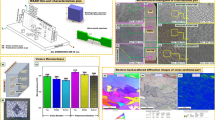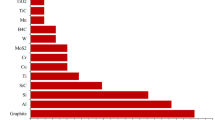Abstract
Unconventional machining like wire electric discharge machining/cutting (WEDM/WEDC) seems to be a better choice for machining/cutting the metal matrix composites (MMCs) because it offers easy control and has the capability of machining intricate complex shapes. But wire breakage in the WEDM/WEDC process decreases the machining accuracy and the quality of the machined surface. This paper describes the effect of four input process parameters (i.e., servo voltage, pulse-on time, pulse-off time, and wire feed rate) on wire breakage frequency and the microstructure of the cut surface during WEDC of SiCp/6061 Al MMC. An optimum range of input parameters has been bracketed as the outcome of this work for determining the effects of input process parameters on the average cutting speed, material removal rate, and surface roughness during WEDC of SiCp/6061 Al MMC. This range of input parameters can also be used for carrying out further research to develop the models for WEDC of SiCp/6061 Al MMC and to optimize the WEDC parameters for smooth cutting.
Similar content being viewed by others
References
Rajurkar KP, Wang WM (1991) On-line monitor and control for wire breakage in WEDM. Ann CIRP 40(1):219–222
Kinoshota N, Fukui M, Gamo G (1982) Control of wire-EDM preventing electrode from breaking. Ann CIRP 31(1):111–114
Patil NG, Brahmankar PK (2006) Some investigations into wire electro-discharge machining performance of Al/SiCp composites. Int J Mach Mach Mater 1(4):412–431
Lindroos VK, Talvitie MJ (1995) Recent advances in metal matrix composites. J Mater Process Technol 53:273–284
Taha MA (2001) Practicalization of cast metal matrix composites (MMCs). Mater Des 22:431–441
Rosso M (2006) Ceramic and metal matrix composites: routes and properties. J Mater Process Technol 175:364–375
Miracle DB (2005) Metal matrix composites—from science to technological significance. Compos Sci Technol 65:2526–2540
Patil NG, Brahmankar PK (2010) Some studies into wire electro-discharge machining of aluminum particulate-reinforced aluminum matrix composites. Int J Adv Manuf Technol 48:537–555
Gatto A, Luliano L (1997) Cutting mechanism and surface features of WED machined metal matrix composites. J Mater Process Technol 65:209–214
Rozenek M, Kozak J, Dabrowski L, Lubkowski K (2001) Electrical discharge machining characteristics of metal matrix composites. J Mater Process Technol 109:367–370
Guo ZN, Wang X, Huang ZG, Yue TM (2002) Experimental investigation into shaping particle-reinforced material by WEDM-HS. J Mater Process Technol 129:56–59
Yan BH, Tsai HC, Huang FY, Lee LC (2005) Examination of wire electrical discharge machining of Al2O3/6061Al composites. Int J Mach Tool Manuf 45:251–259
Sarkar S, Mitra S, Bhattacharyya B (2006) Parametric optimization of wire electrical discharge machining of γ titanium aluminide alloy through an artificial neural network model. Int J Adv Manuf Technol 27:501–508
Ali T (2006) Parametric study and optimization of wire electrical discharge machining of Al–Cu–TiC–Si P/M composite. Int J Mach Mach Mater 1(4):380–395
Saha P, Tarafdar D, Pal SK, Srivastava AK, Das K (2009) Modeling of wire electro-discharge machining of TiC/Fe in situ metal matrix composite using normalized RBFN with enchanced K-means clustering technique. Int J Adv Manuf Technol 43:107–116
Author information
Authors and Affiliations
Corresponding author
Rights and permissions
About this article
Cite this article
Shandilya, P., Jain, P.K. & Jain, N.K. On wire breakage and microstructure in WEDC of SiCp/6061 aluminum metal matrix composites. Int J Adv Manuf Technol 61, 1199–1207 (2012). https://doi.org/10.1007/s00170-012-4095-2
Received:
Accepted:
Published:
Issue Date:
DOI: https://doi.org/10.1007/s00170-012-4095-2




